9 things you need to know about Kristian Blummenfelt’s CADEX Tri frameset
You can now buy the CADEX Tri frameset that took Kristian Blummenfelt to victory in St George and his Sub7 attempt. Here's what you need to know about it

Kristian Blummenfelt has made thousands of people sit up and take notice over the past 12 months.
That’s partly because of his astounding performances – the Norwegian is the reigning Olympic, World Triathlon and Ironman world champion.
But when he arrived in St George, Utah, ready to compete in the Ironman World Championship in May there was another reason he had tongues wagging. And that’s because he was on a dramatic-looking triathlon frameset developed by CADEX.
It’s a frame he used to win both in St George and the Pho3nix Sub7 event in Germany the following month, when he successfully became the first person to complete a full iron-distance triathlon in under seven hours.
His time of 6:44:25 was certainly impressive, and once again many eyes were on that startling CADEX frame.
Well, you can now purchase a production model of that very frameset after CADEX announced its arrival for consumers at the end of June 2022. Here, we take a look at nine key things you need to know about the new frame.
1. It’s far from conventional
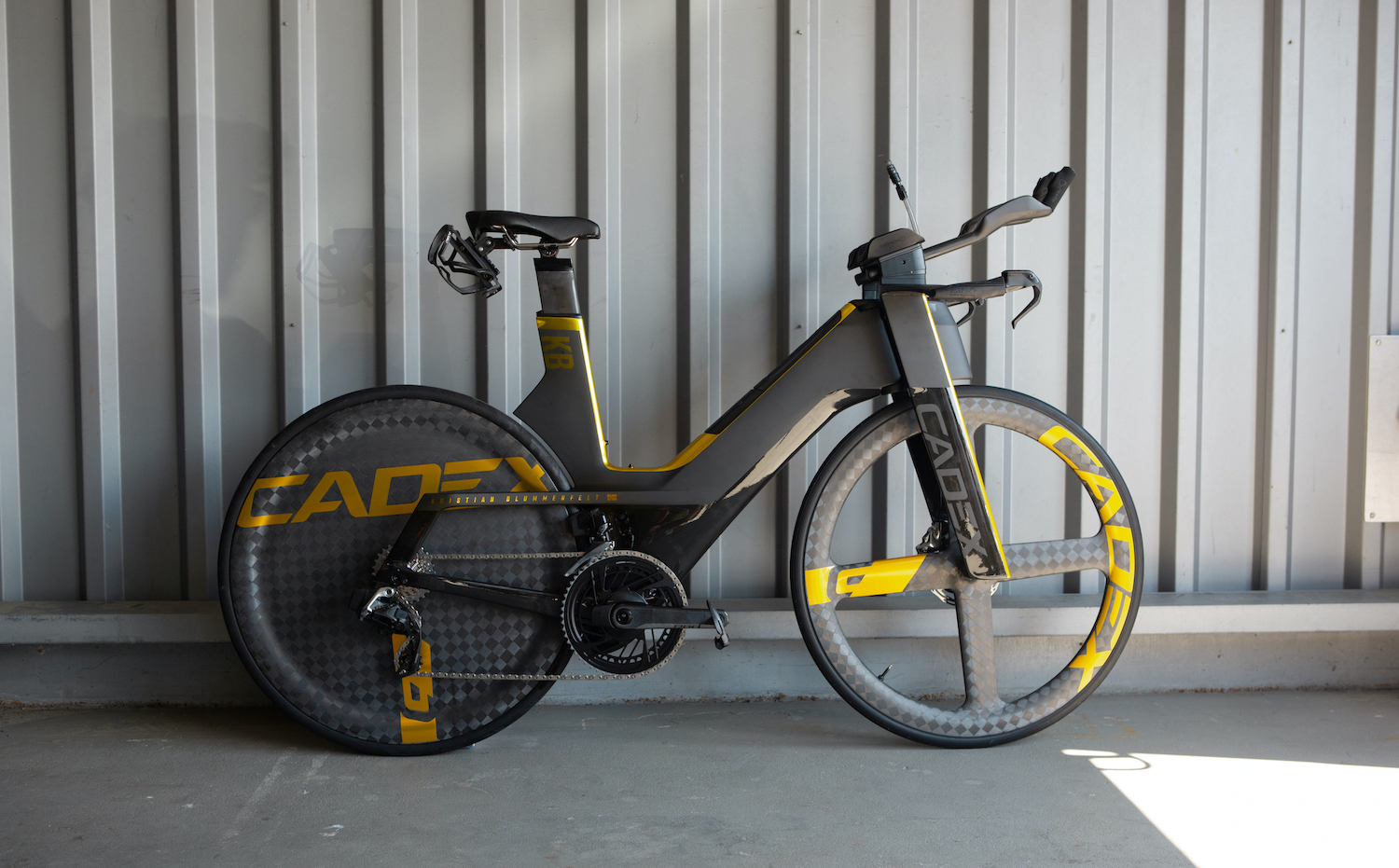
Let’s start with the obvious. We’ve seen triathlon frames steer drastically away from traditional design a few times before, but nothing like this.
There’s no top tube, a ton of storage in the down tube, the forks are extremely wide and the seat stays look unlike anything we’ve seen before.
In its official launch, the brand had this to say: “It’s not derived from a road bike, or even a time trial bike. It doesn’t play by those rules. The all-new CADEX Tri frameset is a no-holds-barred triathlon machine—no restrictions, no limitations.
“It’s designed, engineered and put to the test by the world’s fastest triathletes in a bold quest to push the sport forward. It rewrites the rules.”
2. Fit is at the forefront of its design
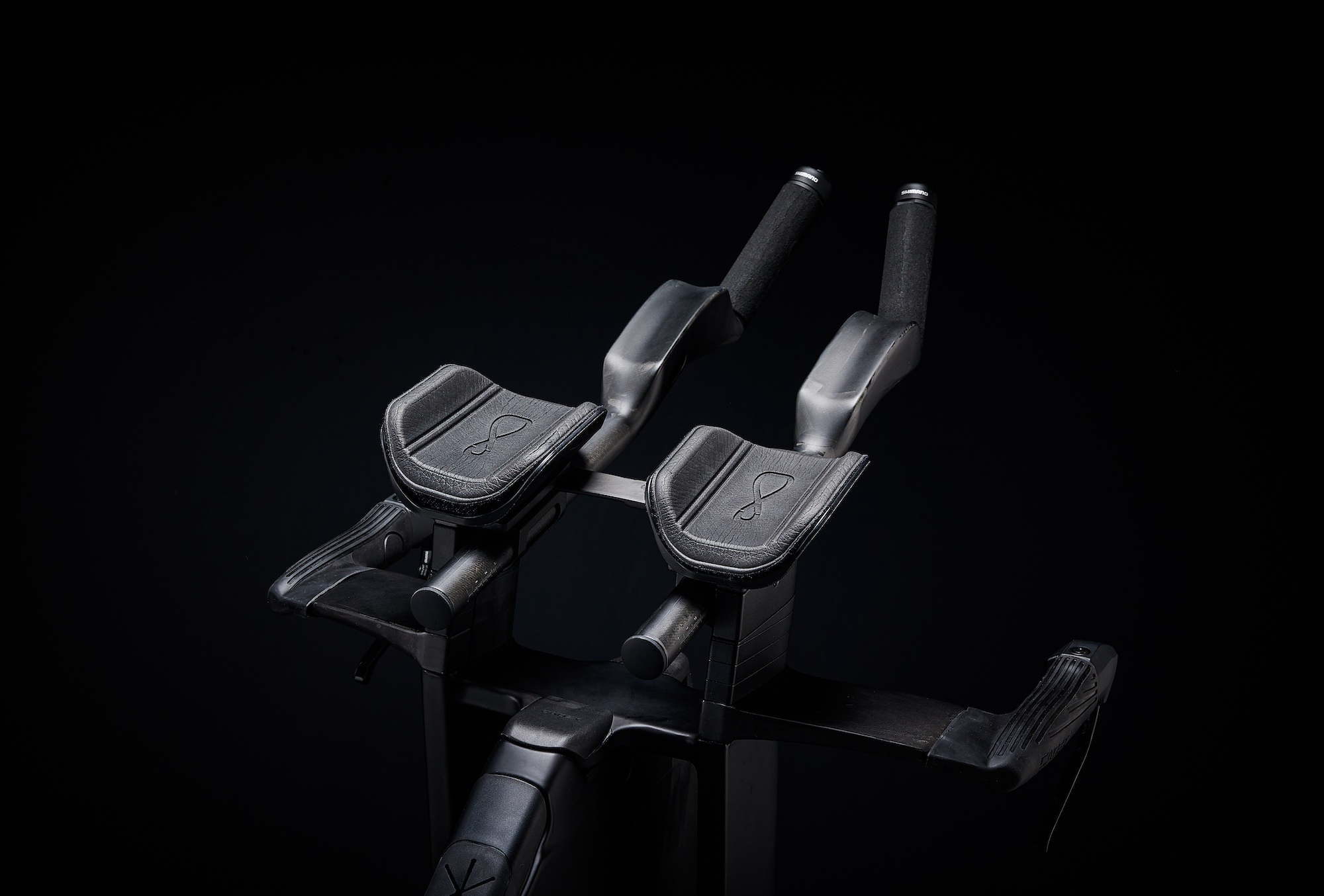
One of the primary objectives for the CADEX Tri frameset was to make it as easy as possible for athletes to achieve a perfect fit regardless of individual body heights and sizes.
To achieve this goal, the CADEX engineering team analysed real-world data from 150 pro and amateur triathletes. The result? Five frame sizes in the form of XXS, XS, S, M and L, plus an abundance of stack, reach and seat post adjustments to guarantee a perfect fit in every situation.
Here’s what kind of adjustability we’re talking about:
- 80mm of stack height adjustment with eight different positions
- 40mm of base bar height adjustment
- 90mm of reach adjustment (in 15mm increments), plus 90mm of step-less fore/aft adjustment so you can dial in reach and hand positioning with total precision
- 120mm of adjustment of the width of the arms (between 190mm and 310mm wide, with 15mm increments)
- Two width options on the aero bars: narrow (110m) or wide (190mm)
- Four angle options (0°, 5°, 10°. 15°) for the aero bars
- 70mm of fore/aft saddle adjustment, resulting in an effective seat tube angle of 76 degrees when furthest back and 80 degrees when furthest forward
3. It puts simplicity at the centre
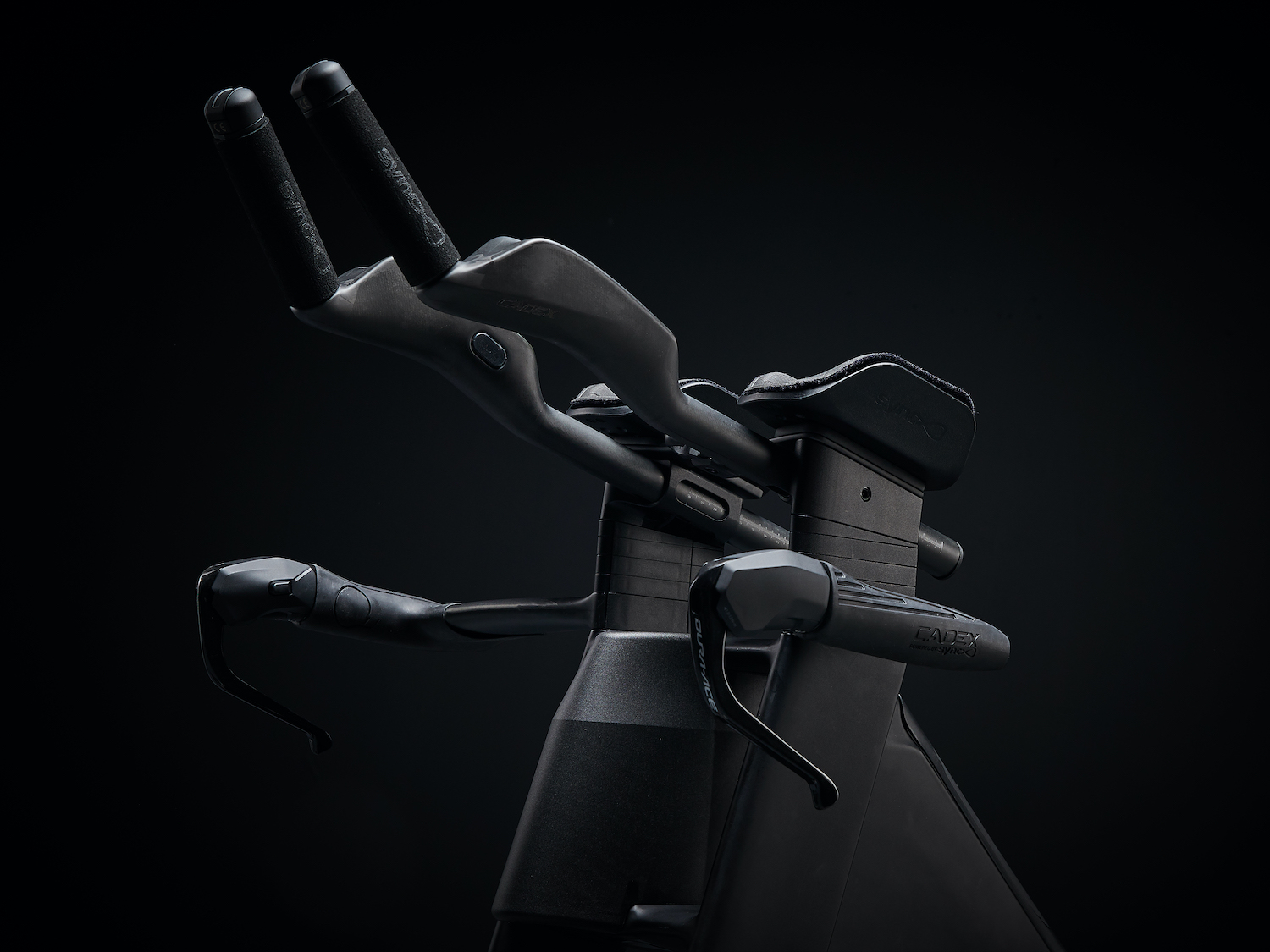
Training and racing triathlon is hard and time-consuming enough as it is, so the more you can minimise time spent tinkering with hardware, the better. And that’s something CADEX has looked to address here.
Fit adjustments are designed to be easy to make with minimal bolts and hardware. For example, the aero bars angle adjustment is said to be a quick job that’s carried out using angled wedges that sit below the arm rests.
For the aero extensions it’s simply a case of moving them forward and backward, while the angles can be changed without needing to remove spacers.
You can also raise or lower stack height without needing to move the extension bars, while the quick-release spacer system means cable routing will stay in place while you make changes.
CADEX has designed the base bar and extensions to fold down easily into a compact size so you can travel without having to disassemble them. Vitally, this means you don’t have to dial in your perfect position each time you’re on the move.
4. The fork is a master manipulator
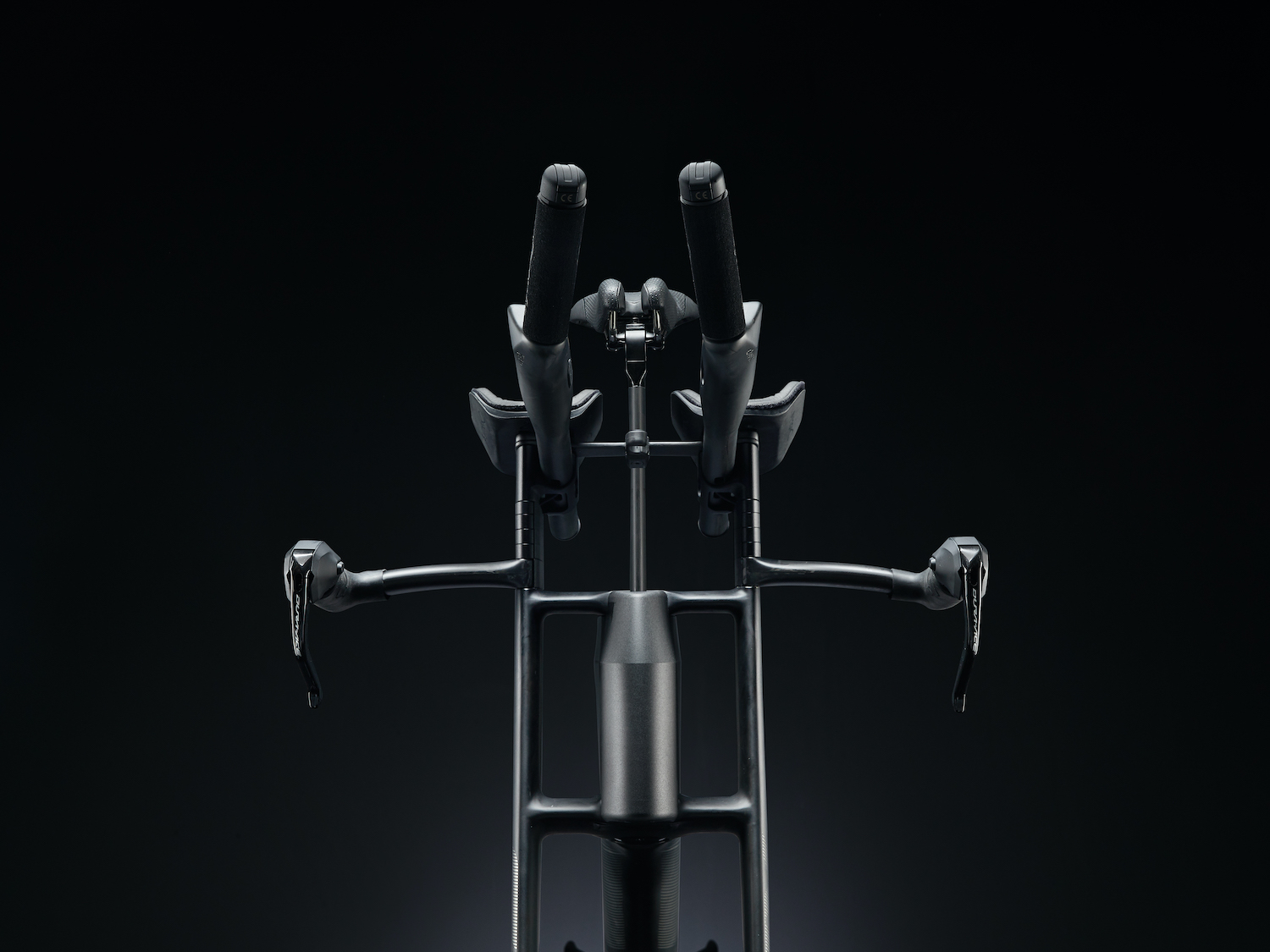
Undoubtedly, it’s the wide-legged, dual-crown fork of the CADEX Tri frameset that turns the most heads.
The brand has utilised wide-spread legs in order to allow air to flow cleanly through their long, bladed profile and subsequently move past the rider’s legs to the aero-optimised rear.
From wind tunnel testing, CADEX found that this design helped reduce airflow blockage at the front and reduced the overall drag of the rider and bike combined.
As you can see from the images, the legs extend all the way up toward the cockpit, which is said to help deliver a stiff front end and reduce flex in the base bar to improve handling.
Speaking about this part of the bike, Blummenfelt said: “The fork is wild looking, one of the things you notice when you first look at the bike.
“Our test data showed that it clearly makes the bike faster in the wind, and I can really feel how stiff and precise the front end feels while descending or cornering.”
Together with the fork, the bike’s eye-catching horizontal seat stays are part of a holistic aero system that’s designed to help minimise the contact surface as air passes through the rear end of the bike. CADEX says this reduces drag and boosts aero performance.
5. It’s fast…
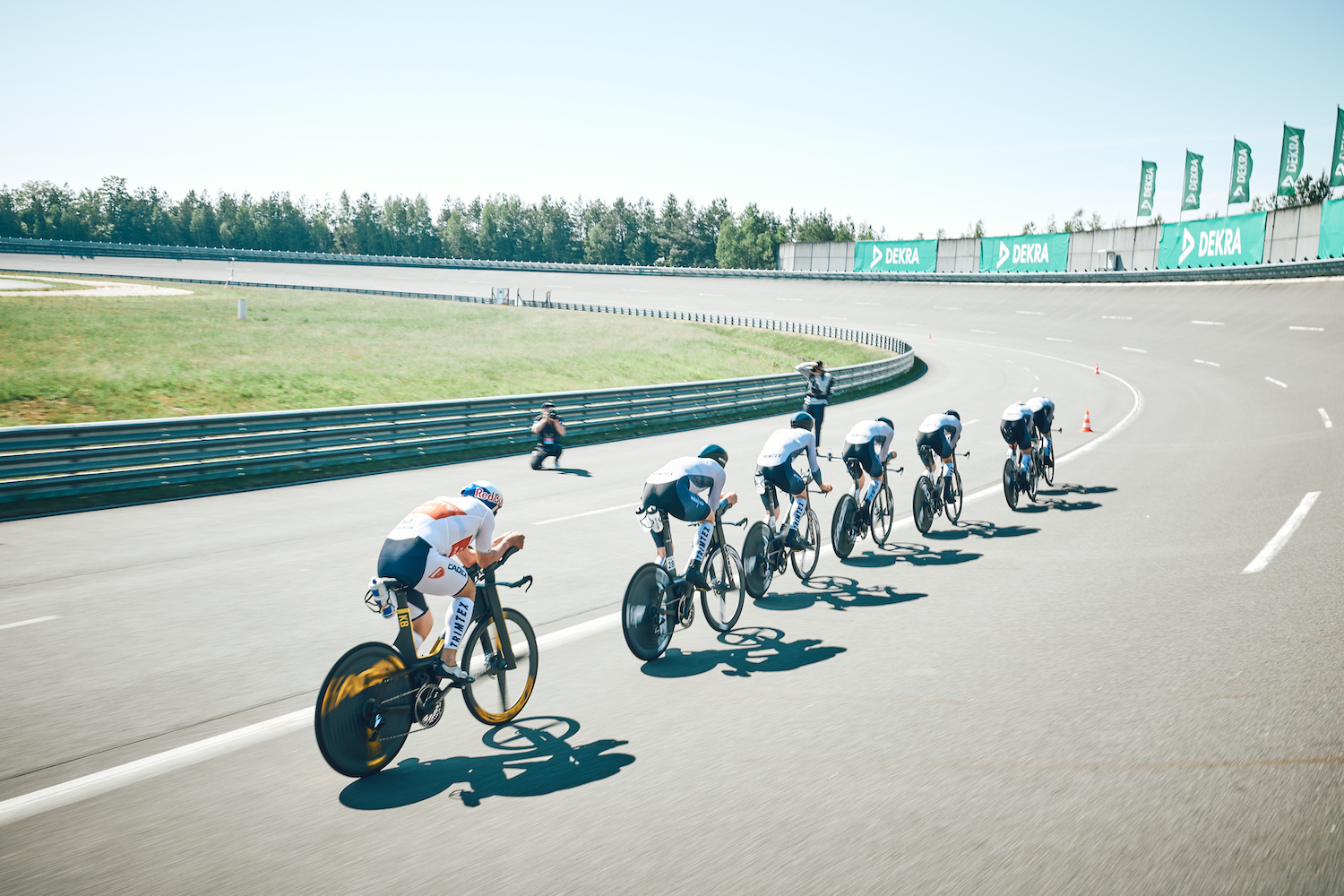
No one can argue that the CADEX Tri frameset has helped deliver two remarkable performances since its debut.
St George may have only been Blummenfelt’s second Ironman, but he secured his victory with aplomb. His time of 7:49:15 saw him finish six minutes ahead of Lionel Sanders in second.
The Norwegian’s registered a bike split of 4:18:42 before hitting the ground at an impressive speed, having clearly got on well with the positioning and the on-board hydration and nutrition storage of the CADEX Tri.
In Germany at Sub7, a bike split of 3:24:22 helped him on his way as he became the first person to go sub-seven over a long-distance triathlon, beating Joe Skipper and finishing with a prediction-smashing time of 6:44:25.
6. There’s no skimping on storage
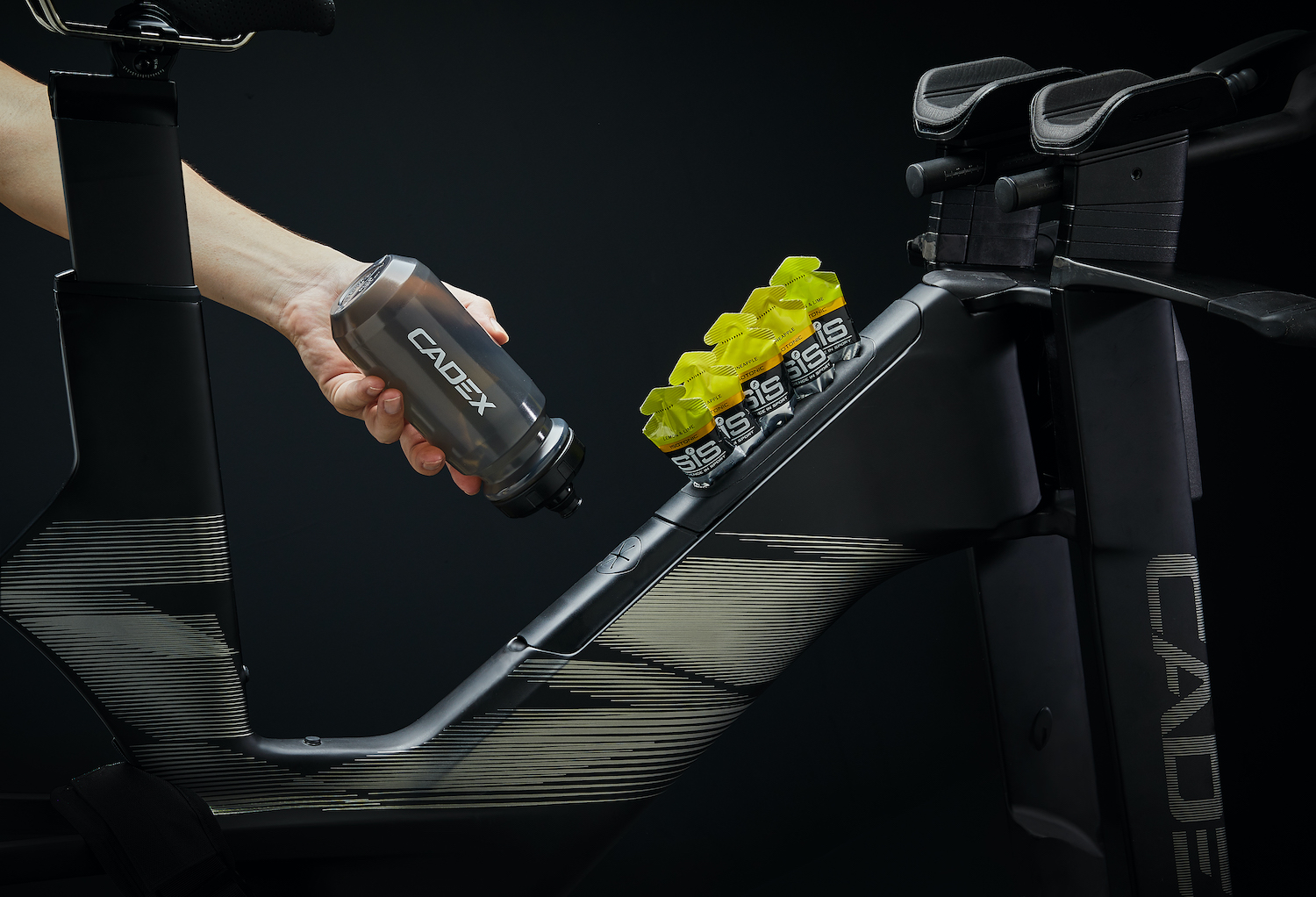
Knowledge around race nutrition and hydration has continued to evolve, and the need for ways to carry it on your bike without affecting aerodynamics has become crucial, as Blummenfelt proved in St George.
Although some of its competitors already utilise storage areas integrated directly into the frame, CADEX has looked to take this one step further by increasing the space available and improving ease of access in the Tri frameset.
The bento box located on the upper section of the down tube is said to be able to hold up to 10 32ml gel packs (in a size L frame). It’s been designed to be easily accessible while in an aero position and uses a rubber cover that holds the gels or bars in place.
The lower part of the down tube is home to a hydration system, with a capacity ranging from 600ml in an XXS frame size to one litre in a size L. A straw then feeds up between the aero bars to allow you to hydrate without moving out of the aero position.
CADEX also claims that the bladder can be quickly refilled one-handed with a traditional cycling water bottle via an easily-accessible port on the down tube. There are also bottle cage mounts on the seat tube, giving you the chance to carry extra hydration when it’s needed.
The last piece of the integrated storage puzzle is a nifty toolbox that sits just above the bottom bracket and is accessible from the non-drive side. Built to carry a multi-tool, tyre lever, CO2 inflator, CO2s and a tube, it should hold just about everything you’d need to stay self-sufficient out on the course.
7. Efficiency is key
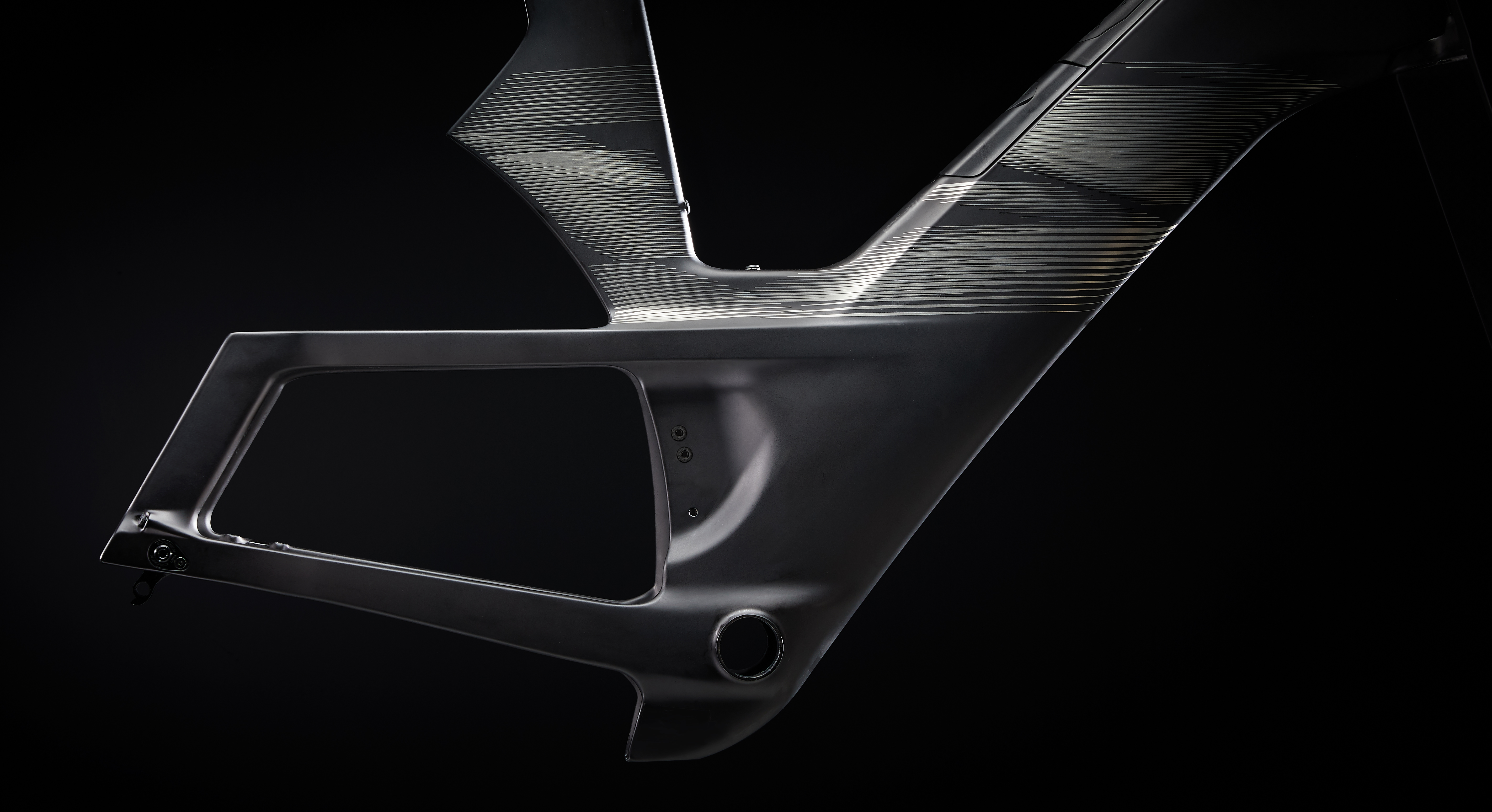
The CADEX Tri frameset is constructed from the highest grade T1000 carbon fibre and has utilised cutting-edge layup techniques to ensure it offers class-leading pedalling and torsional stiffness.
It has a claimed weight of just under 4,577g and offers frame and torsional stiffness that’s said to be on par or better than the likes of Canyon’s Speedmax and Cervelo’s P5X.
CADEX says: “When combined with ultra-adaptable fit, groundbreaking endurance aero technology, and a completely integrated hydration and nutrition system, the result is record-breaking total efficiency.”
8. Travel isn’t just an afterthought
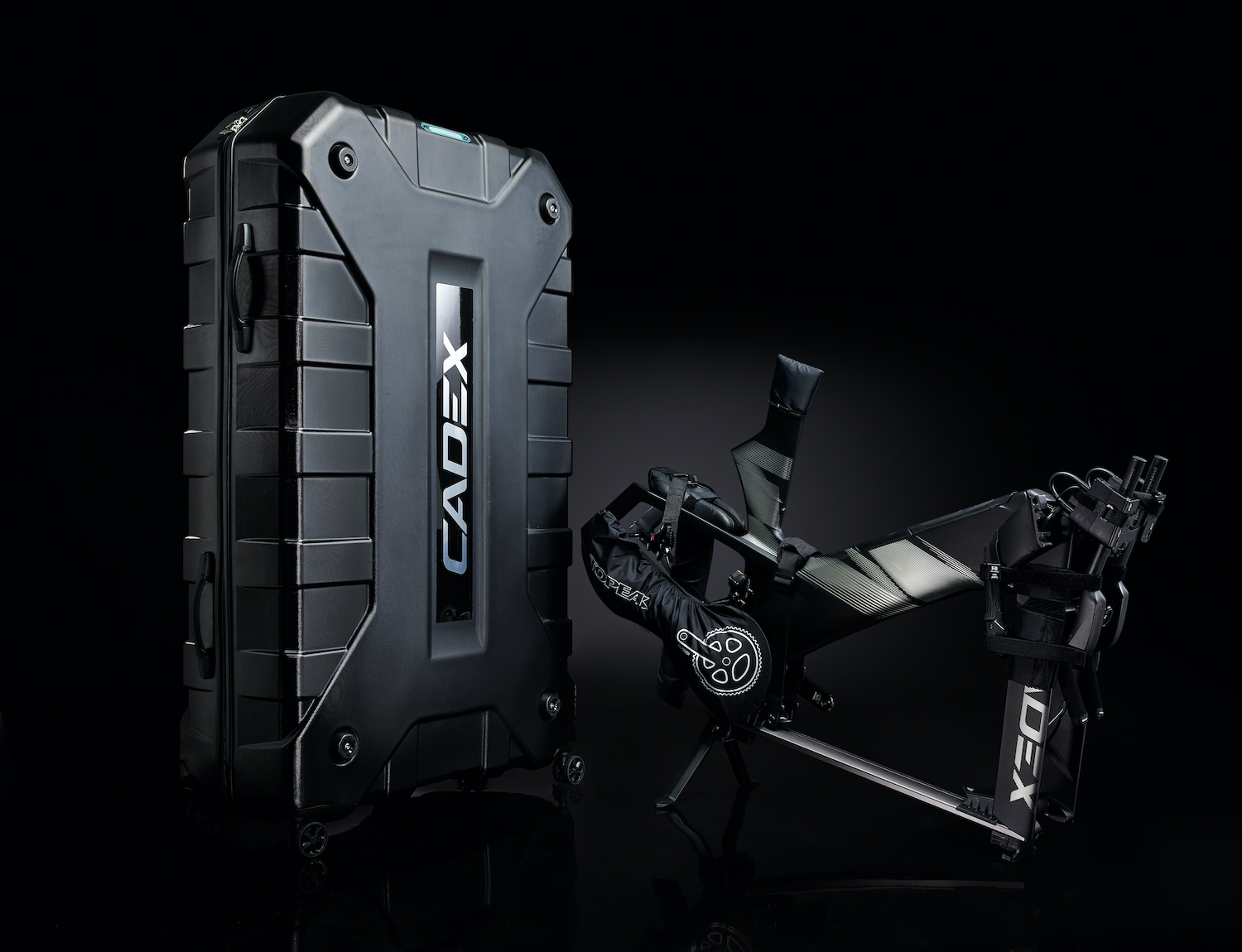
Seeing as this bike is designed to be raced over long-distance triathlons, it’s fair to assume that consumers interested in it will expect it to travel well. And the good news is that CADEX has given that a lot of thought and attention.
For starters, as we’ve highlighted in point four, the brand has made sure the CADEX Tri frameset requires as little work as possible to assemble and disassemble it.
Plus, anyone buying one will also get a purpose-built Topeak travel case that’s made with a polycarbonate shell. It’s said to be sturdy and is designed to provide high-impact strength and protection.
Inside, there’s protection sleeves, a drivetrain cover and a way to mount your frame so you can keep it secure and protected when it’s in transit. When you reach your destination, you can use the mounting system as a mini work stand to get the bike built and prepped for action.
Oh, and it comes with wheels, too, so getting it around the car park or the airport should be less of a chore.
9. It’s available for you to order… right now!
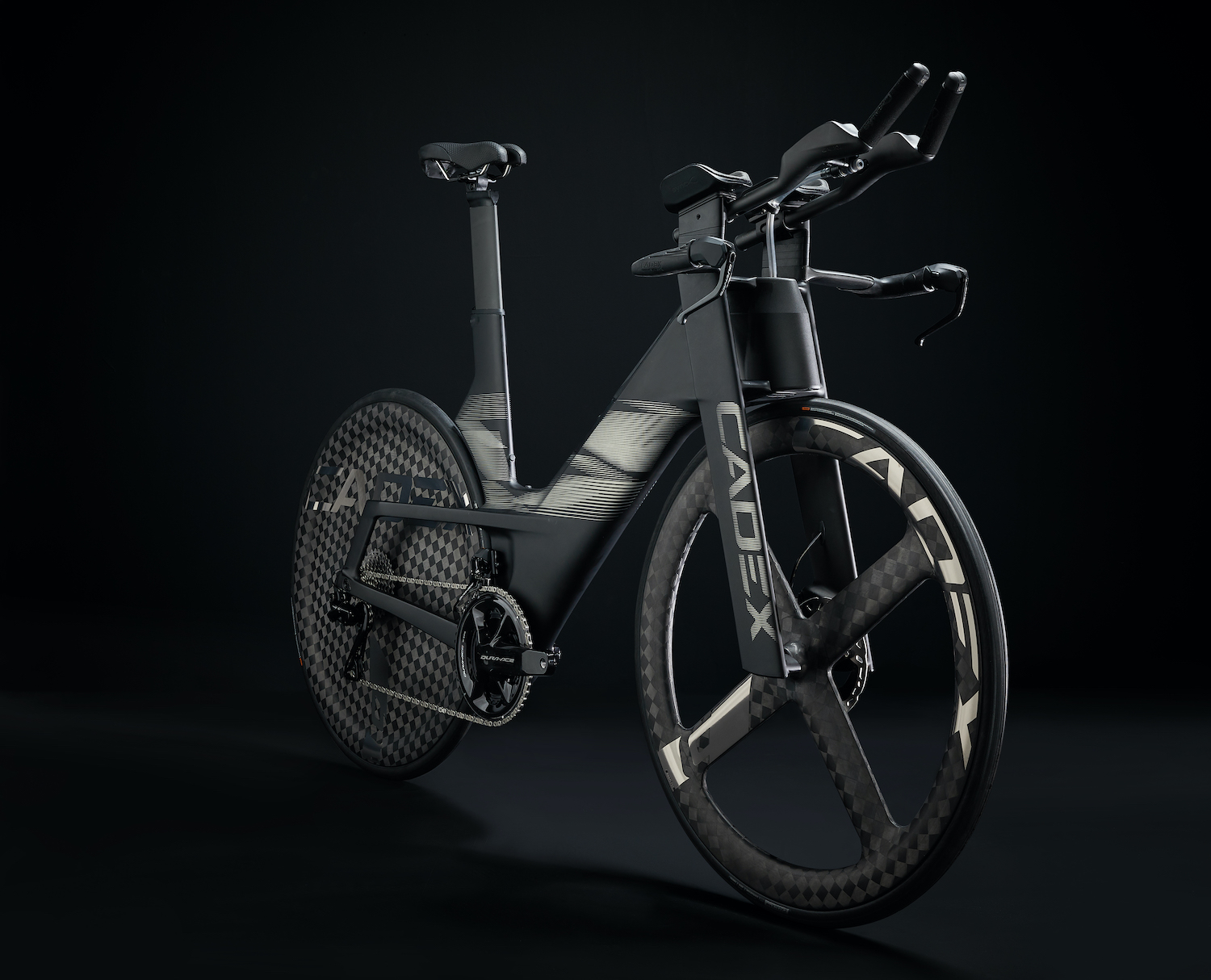
Yep, that’s right. As we said at the start,CADEX has launched a production version of the Tri frameset, meaning you can now order and ride the same frame that has carried Kristian Blummenfelt to the finish-line on his record-breaking endeavours.
The disc-brake only frameset has an RRP of £6,499, which includes the frame, fork, aero cockpit and travel case.
To complete the set-up, you can also purchase the same wheels that Blummenfelt has been using. The disc-brake CADEX Aero 4-Spoke Tubeless front wheel is available for £1,499, the rear wheel is available for £1,699.99 and the CADEX Aero Disc Tubeless rear wheel retails at £2,199.





